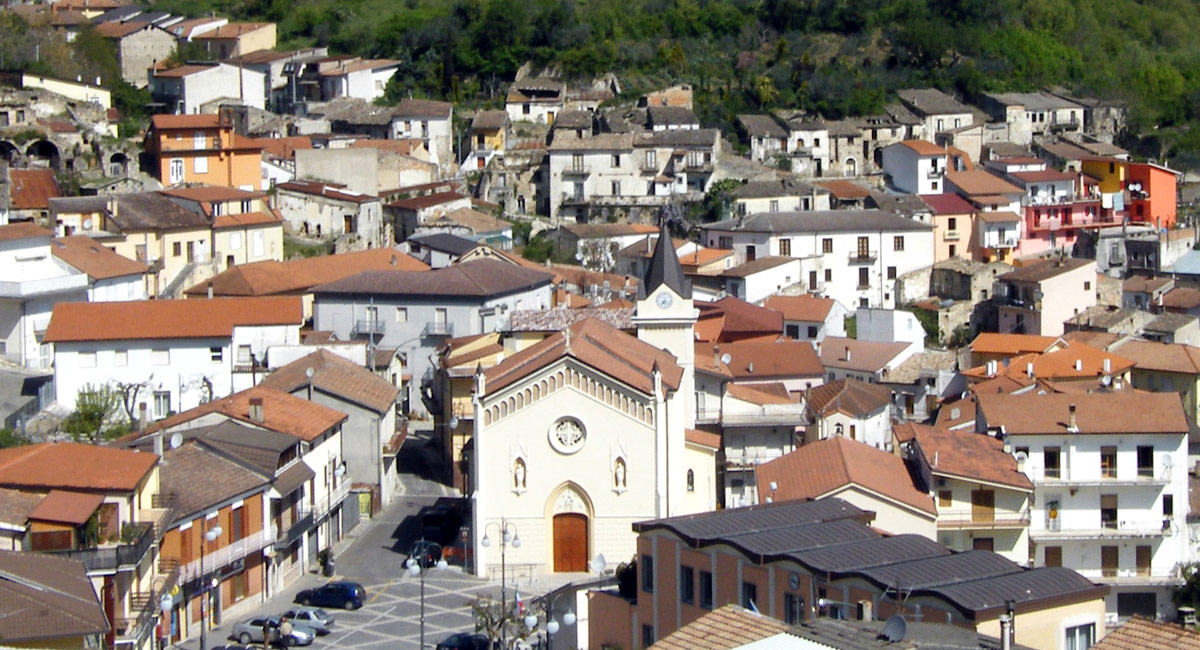ITINERARIES IN THE VALLEYS OF GOOD LIVINGSan Sossio Baronia

The spring water, which flows abundantly from the surrounding hills, is at the heart of the town's very origins. In fact, in the early Middle Ages, San Sossio Baronia was the area of springs within the possessions of the Lords of Trevico. Shepherds with their flocks would descend to water them in that area, where three caves carved into the clay now exist. One of these is smaller, in the center, and because of the nativity scene-like shape of the whole, these caves represent the caves of St. Joseph, the Madonna, and the Child, respectively. This area is commonly known as the Madonna's Water. The town's origins date back to the 13th century, around a spring near the parish church. Built in 1754, it was destroyed by the 1930 earthquake. Now in ruins, although the date 1589 was engraved on the holy water font, it dates back to the 13th century. The presence of ruins and topographical features suggests that the area was an important center even in Roman times. Adjacent to the Fiumarella stream, as evidenced by the remains of a Roman bridge in Turro, the current highway also follows the route of the Appian Way. Expertly dug wells were found at intervals of approximately 30 meters and were once used to irrigate fields and water caravans. Significant archaeological finds, such as coins, Roman weights, weapons, and various household items, were found in this area civitas They are located at the Irpinia Museum in Avellino. It was later destroyed during the Roman Empire, whether for defense or conquered by other peoples is unknown. The town's origins, dating back to the 13th century, are confirmed by a rescript of Charles of Anjou in 1299. The name San Sossio presumably derives from a legend. In fact, it is said that a donkey, carrying the relics of the martyr Saint Sossio (martyred with Saint Gennaro) destined for a nearby town, reached a place now called Sella Coppola, and took the road that led to the few remaining houses at the bottom of the valley, and there was no way to make it change direction. It was hailed as a miracle: the relics remained in the small church of the Annunziata, and the town was named San Sossio. During feudalism, the Sossians always enjoyed a certain autonomy due to their extraordinary spirit of independence and freedom. It is said of an old woman who, around 1500, when the feudal lord, after quenching his thirst, wanted to impose a tax, replied, "The water is fresh, Your Excellency, but our heads are hot," and the lord carefully avoided applying the tax. This may have been the origin of the town's coat of arms: three jets of water gushing from the top of a hill surmounted by three five-pointed stars. In 1612, thanks to Ferdinando Loffredo, the most fertile spring was given a more dignified appearance in the fountain, which now appears majestic in its architectural simplicity and in the bas-relief with the coat of arms of the noble Loffredo family and the image of the patron saint. The town also actively participated in the revolutionary uprisings; upon learning that Garibaldi was marching towards Naples, the people of Sossus attacked the Town Hall. This legitimist movement soon degenerated into banditry. The gangs were swelled by criminals of the worst sort, wreaking havoc and committing all manner of crimes, protected by the thick woods. This area was dominated by the bandit Giuseppe Schiavone, along with his inseparable companion, Filomena Pennacchio, born in San Sossio on November 6, 1841. During a raid on the town, they severed the four angel heads carved in high relief at the corners of the base of a stone cross from 1611. This recently restored cross is the pride of the town and forms the backdrop to one of its most important streets.
ITINERARIES IN THE VALLEYS OF GOOD LIVINGPlaces of Interest
Sanctuary of St. Michael the Archangel
Its origins date back to 1929. It is a pilgrimage destination for believers from nearly the entire province during the celebrations held on September 29th and May 8th. The influx of people is due both to the deep traditional sense of religion and the worldly pleasure of spending happy hours in the open countryside and admiring the landscape from above.

